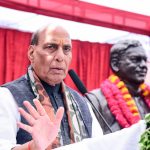Sustainability needs policies, but it also needs people. Unless we bring the energy transition and sustainable development closer to people, we are unlikely to get the long-term social buy-in for the hard decisions needed to have pro-planet and pro-people impact nor the community action to sustain programmes. This is why, when it comes to India’s sustainability initiatives, actions speak louder than words.
Sustainability is not just an environmental concern; it is the lens through which economic and social transformation also unfolds. Consider the small farmer. India is the world’s second-largest producer of fruits and vegetables, yet an estimated 5-16 per cent of this produce is wasted annually. With renewable energy-powered livelihood products, however, kernels of change are becoming palpable on the ground. In Musalreddigaripalli, a small village in Andhra Pradesh, women’s collectives are earning around Rs 3.5 lakh every month by drying brinjal, tomato, bitter gourd, and bananas in solar-powered dryers rather than letting it go to waste. When the most vulnerable and marginalised are able to demonstrate this agency and sustainable solutions at scale to improve their lives and livelihoods, opportunities for new markets and businesses, which then feeds into to the larger national policy mechanism. India now is the first country to have a policy on distributed renewables for livelihoods.
Through actions like these, the sustainability transition has been coming closer to Indians over the last decade. There are three components to this that can act as a blueprint for a green and inclusive economy for other countries in the Global South.
First, making development citizen-centric. Whether it be the Saubhagya scheme that has ensured nearly 100 per cent household electrification or the Ujjwala Yojana that provided 9.5 crore LPG connections to ensure access to cleaner cooking fuels, or the smart meter roll-out that is literally putting power in the hands of the people, India is making the energy transition a household phenomenon. The Ujala scheme, aimed at energy conservation via LED lighting, is managing to save nearly 3.9 crore tonnes of CO2 emissions annually. In parallel, the Jal Jeevan Mission has provided 8 crore rural households with tap connections for safe drinking water. Progress is being made under the National Clean Air Programme, which has raised ambition to reduce particulate matter air pollution by 40 per cent in select cities by 2026. Further, the Swachh Bharat Mission along with the nudge to curb single-use plastic, are examples of how sustainability initiatives at scale can also capture public imagination at large.
As we scale up such citizen-centric initiatives, efforts could focus on strengthening real-time and high-quality data flow from households to ensure that technologies and related interventions are working on the ground. Officials at all levels of governance need to take periodic feedback from people on the implementation of such schemes.
Secondly, driving sustainability at scale through economy-centric interventions. In order to reach net-zero carbon emissions by 2070, both India’s energy system and economic structures need to change. It is leading the way here on several fronts. The country now has the fourth-largest renewable and solar energy installed capacity in the world. According to analysis by CEEW, NRDC and SCGJ, India’s renewable energy sector will employ 10 lakh people by 2030. To train this workforce of the future, the Skill Council for Green Jobs is training workers on green businesses and services. Rural India isn’t excluded from the conversation either. Distributed renewable energy products have a market opportunity worth Rs 4 lakh crore and are directly empowering women at the grassroots. Similarly, the PM-KUSUM scheme, which had solarised 1.5 lakh irrigation pumps by October 2022, aims to increase the incomes of farmers while reducing their irrigation bills. As the world moves away from fossil fuels, we are also taking big strides in the fuels of the future, especially green hydrogen. With the National Green Hydrogen Mission, one of the world’s largest, India can use green hydrogen to decarbonise heavy industries, like fertilisers and steel, without compromising on growth and competitiveness.
These are indeed big steps for India’s urban and agrarian economy. To unlock their true potential, however, these steps need to be scaled — through production-linked incentives for manufacturing (particularly focused on higher value addition rather than just assembly of clean tech products), enhanced capital support, diversification of supply chains and incentives for buyers (such as the one FAME scheme provides for electric vehicles).
Thirdly, India is cementing sustainability initiatives internationally. The International Solar Alliance (ISA) launched by India and France in 2015 has been designed to reduce prices of solar energy, aggregate demand and create collaborative opportunities among 115 signatory countries now. Similarly, the Coalition for Disaster Resilient Infrastructure (CDRI) launched by India in 2019 is fostering resilient infrastructure in regions dealing with the compounding shocks of climate change. Under its Nationally Determined Contributions, India plans to create a carbon sink of 2.5-3 billion tonnes of CO2 through forest cover by 2030. Additional steps are being taken to improve the management of wetlands (including their role in buffeting climate risks) and promote biodiversity conservation. India also committed to restoring 26 million hectares of degraded land when it hosted the conference of the parties for the United Nations Convention to Combat Desertification.
Finally, through Mission LiFE (or Lifestyle for Environment), India has put sustainable consumption at the heart of the conversation about sustainable development. It has posed a challenge to its citizens but also to people elsewhere about how to develop the economy and improve life chances and quality of life, while nudging behaviour, enabling markets for a circular economy, and redefining aspirations.
India has announced that “green growth” will be one of the seven pillars of its journey to a developed country status by 2047. Despite temptations to choose the easier path of polluting first and cleaning up later, it is making harder choices to demonstrate how job, growth and sustainability can go together. But the triple planetary crises of climate change, biodiversity loss, and pollution cannot be fought alone. It needs international cooperation, adherence to rules, fulfilment of commitments, co-development of clean technologies, and access to more capital at a lower cost. Ultimately, the magic of this sustainability story will always lie in giving agency back to people and communities.
(Dr Arunabha Ghosh is CEO, Council on Energy, Environment and Water (http://ceew.in). Follow @GhoshArunabha @CEEWIndia)





